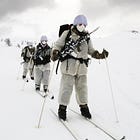Snow and warfare: 1776-2026, Part 2
How the cryosphere has shaped military history—and why the specter of nuclear winter endures
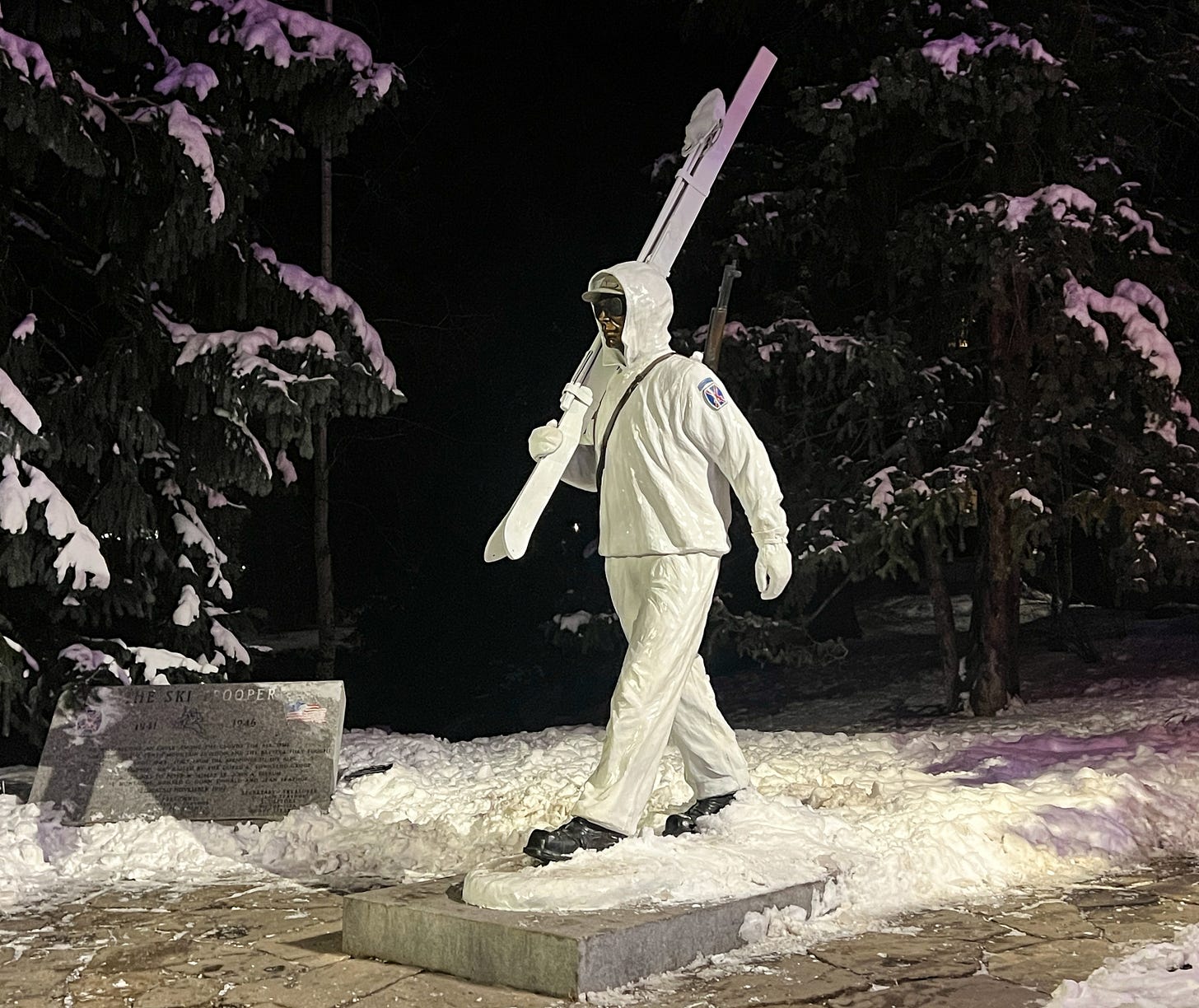
Snow, ice, and frigid temperatures have created both threats and opportunities for warriors throughout the ages.
Winter weather can become an enemy or an ally—claiming lives and severing supply lines, or concealing offensives and leveling the battlefield.
In Part 1 of this series, I examined how frozen water and bitter cold shaped six pivotal military conflicts—from George Washington’s 1776 crossing of the Delaware River to the daring 1943 commando raid on Hitler’s nuclear weapons program in Norway.
In this post, I finish my survey of key battles in which the cryosphere played a leading role. Although snow.news focuses on topics like the water supply and winter sports, I can’t tell the full story of snow without digging into its darker history of tragedy and misery.
Toward the end, I take the liberty of looking into the future. These scenarios aren’t based on séances with the ghost of Henry Kissinger but on decades of compulsive news consumption—habits forged during my upbringing as one of the Cold War kids who grew up watching The Day After and WarGames.
As in Part 1, I’ve listed resources for further reading; some of the books are still on my docket, but anything marked with a ✅ means I’ve read the source and recommend it.
7) The 10th Mountain Division and America’s ski industry
Many books have been written about the “ski troopers” who endured grueling alpine training around Colorado’s Camp Hale—now a national monument near Vail. Veterans of the 10th Mountain Division include many founders and leaders of the American ski industry: Pete Seibert (Vail), Friedl Pfeifer (Aspen), Alf Engen (Alta), Minnie Dole (National Ski Patrol), and dozens more. Some 70 U.S. ski resorts have ties to the 10th Mountain Division.
Even before the United States entered World War II in 1941, some military planners recognized that the nation was sorely lacking in manpower, expertise, and equipment for fighting in mountainous or snowy environments. By contrast, the Germans had their elite Gebirgsjäger—highly trained alpine troops with specialized gear and extensive high-altitude experience.
To remedy the situation, and with much press fanfare, the U.S. Army created a mountain training center at Camp Hale. It drew some of the world’s leading skiers, alpinists, and mountaineers, including refugees from nations already overrun by the Nazis.
The video below is a propaganda film produced by Warner Brothers in 1943, complete with fake battles and singing troops.
Ironically, much of the snow-related training and equipment ended up being of limited use. When the troops were sent to Europe in 1945 to take part in the invasion of Italy, the fighting was in the lower-elevation Apennines, rather than the snowy Alps. Still, the battles were fierce, bloody, and heroic; as historic accounts attest, it was like the opening to Saving Private Ryan, only set in the mountains. One of the most celebrated conflicts was the taking of Riva Ridge—now the name of a legendary trail at Vail that drops 3,000 vertical feet.
The fancy alpine gear developed at Camp Hale and elsewhere never wound up reaching the theater of combat because of military snafus and shifting priorities. After the Allies conquered the Apennines, the Germans gave up in Italy, obviating the need to invade the Alps in a potential repeat of “The White War,” the World War I battle I wrote about in Part 1.
📖 Learn more:
✅ The Last Ridge: The Epic Story of America’s First Mountain Soldiers and the Assault on Hitler’s Europe, McKay Jenkins, 2021.
✅ The Winter Army: The World War II Odyssey of the 10th Mountain Division, America’s Elite Alpine Warriors, Maurice Isserman, 2019.
8) The Eastern Front: Germans vs. Soviets in World War II
As I noted in my earlier post, Napoleon’s attempt to march east and conquer Russia in 1812 ended in catastrophe. But that didn’t stop Hitler from trying the same thing in World War II, leading to the deaths of more than 20 million Soviets, plus millions of Germans on the Eastern Front.
In the deadliest theater of World War II, the mass of casualties is almost impossible to fathom. During the conflict, for example, the Germans laid siege to Leningrad (now Saint Petersburg) for 872 days, so the carnage occurred year-round, but the suffering was particularly brutal during the Russian winter.
The Battle of Stalingrad remains one of the bloodiest fights in world history, which is saying something. Hitler’s attempt in 1942 to capture the namesake city of the Soviet leader led to the deaths of around 2 million combatants and civilians. When winter arrived, the Soviets leveraged their familiarity with cold-weather combat to encircle the German 6th Army. Poorly equipped for the cold, the Germans froze, starved, fell ill, and failed to receive succor from the Luftwaffe’s promised airlift due to the challenging weather and Soviet anti-aircraft fire.
The Soviet victory at Stalingrad marked a key inflection point in World War II and helped turn the tide against the Nazis.

📖 Learn more:
✅ Russia’s War: A History of the Soviet Effort: 1941-1945. Richard Overy, 2022.
✅ The Eastern Front: The German War against the Soviet Union. United States Holocaust Memorial Museum.
When Titans Clashed: How the Red Army Stopped Hitler, David M. Glantz and Jonathan M. House, 2022.
9) The Battle of the Bulge and the Winter Offensive of 1944-1945
The Allied invasion of Normandy in June 1944 was the beginning of the end for the Nazi empire, but Hitler wouldn’t go down easily.
In December 1944, the Germans launched a surprise winter attack against weakly defended Allied positions in the Ardennes Forest of Belgium and Luxembourg. The Nazis’ goal was audacious: pierce the Allied lines, capture Antwerp, and force a potential negotiated peace on the Western Front. The Germans’ last-gasp gambit used winter weather to their advantage and thrust their forces deep into Allied-controlled territory, creating a “bulge” in the hard-fought line.
During one of Europe’s coldest winters in decades, the Nazi and Allied troops fought viciously in what would become the largest, bloodiest battle for American forces in the entire war. Some 600,000 American troops took part in the conflict, with around 90,000 killed, wounded, captured, or missing.
The extreme cold and snowy weather caused weapons to jam and forced vehicles to freeze up, limiting both sides’ ability to fight and travel overland. In the skies above, storms and poor visibility hampered Allied air operations. Countless soldiers suffered from frostbite, hypothermia, and trench foot, a malady first recognized in World War I, in which persistent exposure to cold, damp, and unsanitary conditions caused ill-equipped soldiers to suffer severe tissue damage in their lower extremities.
Ultimately, clearing weather allowed Allied air superiority to reassert itself. General George Patton’s Third Army led a successful charge against the Germans, who were eventually pushed back to their starting positions, badly weakened by the encounter.

On the Eastern Front, snow and cold weather would also play a defining role in the Soviets’ winter offensive against the Germans in early 1945, which sounded the death knell for the Nazis. In Eastern Europe, the muddy times of rasputitsa (season of bad roads) can slow or obstruct travel, even today, but during the frigid winter, the roads iced over, which helped the superior forces of the Soviets to quickly gain territory. As with George Washington’s charge across the Delaware River, the Soviet attack during the depths of winter caught the Germans by surprise.
By the end of April 1945, as Soviet forces were descending upon Berlin, Hitler gave up all hope and committed suicide in his bunker. Germany surrendered about a week later.
📖 Learn more:
✅ The Longest Winter: The Battle of the Bulge and the Epic Story of World War II’s Most Decorated Platoon, Alex Kershaw, 2007.
10) The Korean War and the Battle of the Chosin Reservoir
It’s been more than seven decades since the Korean War (1950-1953), yet the United States remains locked in a tense military standoff on the divided peninsula.
In June 1950, North Korea, backed by the Soviets, invaded South Korea and quickly captured its capital, Seoul. In response, the United Nations and the United States, led by General Douglas MacArthur, stepped in to defend the South Koreans. After a dramatic amphibious assault at Inchon in September, the U.N. and U.S. forces surged northward toward the Chinese border. At the same time, China began secretly inserting hundreds of thousands of troops into North Korea.
MacArthur underestimated the Chinese, who in November surrounded tens of thousands of troops as temperatures plunged around Chosin Reservoir. Outnumbered nearly four to one, the U.S. Marines and other soldiers had only one option: escape by fighting their way south to the port of Hungnam. The frigid conditions claimed innumerable casualties on both sides in what would become immortalized as the “Battle of the Frozen Chosin.” Temperatures dropped to minus 30 to 40 degrees Fahrenheit during the 17-day battle, causing 8,000 cases of frostbite on the U.S. side.
The Marines, later known as the “Chosin Few,” eventually reached Hungnam, where one of the largest amphibious evacuations in U.S. history unfolded. The breakout succeeded, but the Chinese soon reclaimed the North Korean territory. The war ground into a bloody stalemate that led to the division of the peninsula near the 38th Parallel, a fortified border that still exists today.
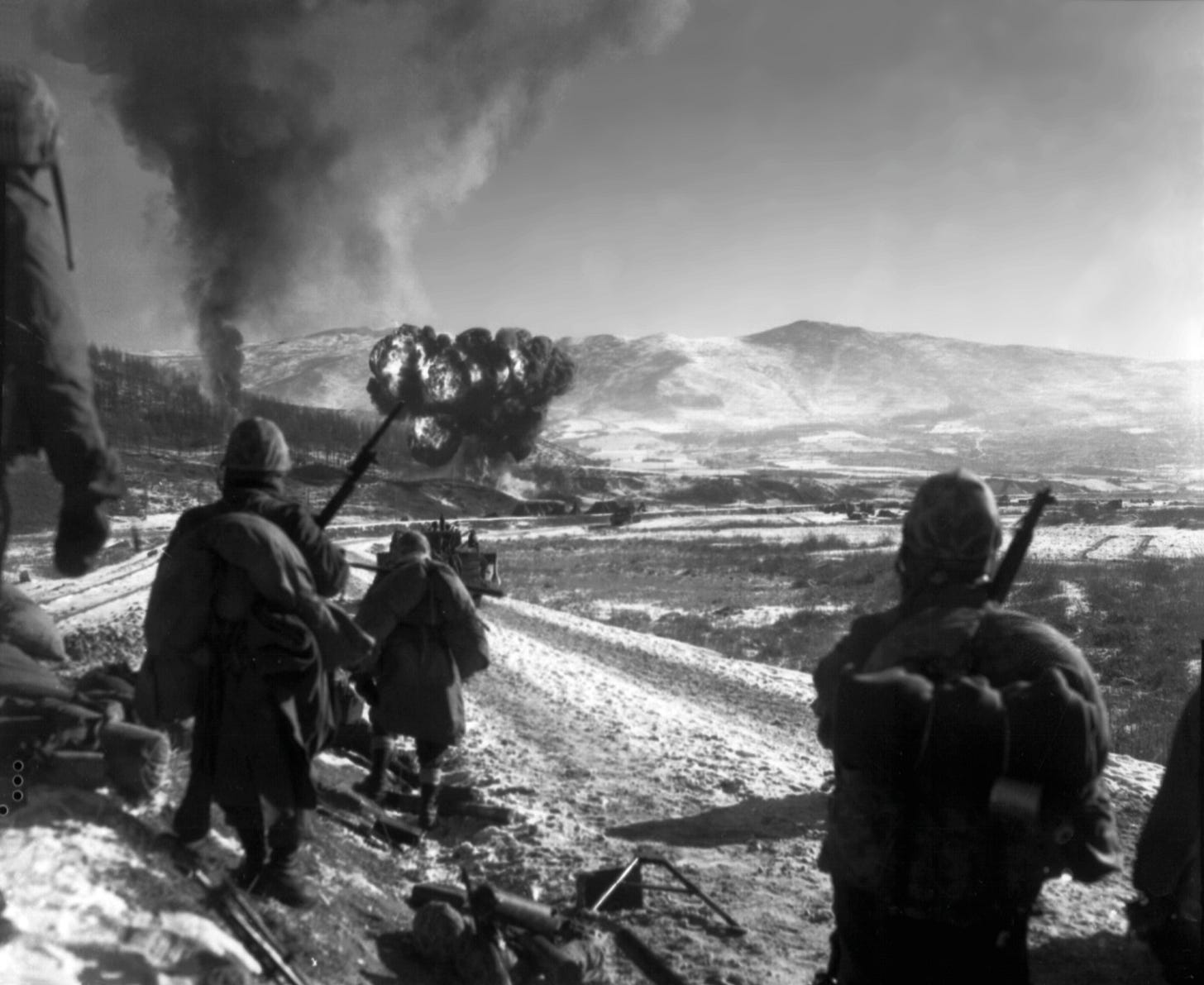
📖 Learn more:
✅ On Desperate Ground: The Epic Story of Chosin Reservoir—the Greatest Battle of the Korean War, Hampton Sides, 2019.
✅ The Korean War Battle of Chosin, How Military Medics Saved the ‘Chosin Frozen,’ Janet Aker, health.mil, 2023.
11) Afghanistan’s “fighting season” in the Graveyard of Empires
Since 1776, our nation has fought many wars, but none were as long as the conflict in Afghanistan, which lasted nearly 20 years from 2001 to 2021, killed more than 2,400 U.S. service members, injured tens of thousands more, and cost trillions of dollars.
When U.S. forces finally withdrew, the Taliban swept back into power—an outcome that echoed the fates of earlier foreign armies that tried to impose their will on the region.
The Soviets invaded Afghanistan in 1979, attempting to prop up a faltering communist government. But their decade-long occupation proved ruinously expensive in blood and treasure, contributing to the eventual collapse of the USSR. After the Soviet withdrawal, Afghanistan descended into civil war. By 1996, the Taliban seized control of the country.
Long before the Cold War, the British Empire struggled to subdue Afghanistan in the 19th and early 20th centuries. During an infamous winter retreat from Kabul in 1842, roughly 16,000 troops and civilians tried to flee through snow-covered passes to Jalalabad; only one European, Dr. William Brydon, arrived safely, with the rest either captured or killed by the elements, starvation, and ambushes.
These accumulated military disasters gave Afghanistan its enduring moniker: the “Graveyard of Empires.”
Geography and the winter weather help explain why. Practiced in guerrilla warfare and insurgency, Afghan fighters have repeatedly outlasted and exhausted armies trying to invade and conquer the notoriously treacherous terrain. The Hindu Kush mountain range, which dominates parts of the country, features harsh winters and a maze of glacially carved landscapes that have long confounded warriors.
Even in the 21st century, Afghanistan had a “fighting season” shaped largely by snow cover: when mountain passes closed, vast swaths of the country became inaccessible, creating a meteorological ceasefire until the so-called “spring offensive” that we used to hear about regularly in the news.
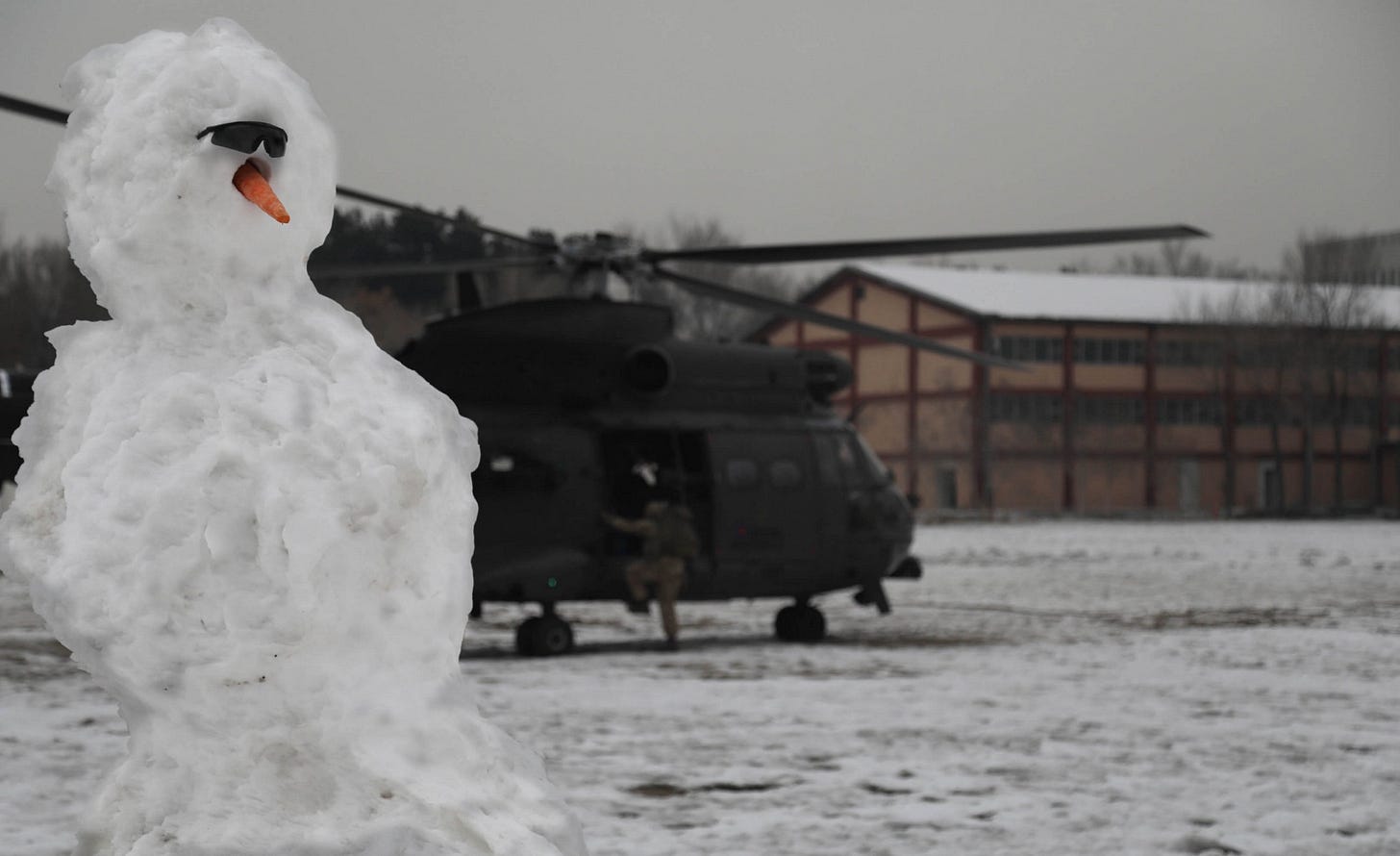
📖 Learn more:
The American War in Afghanistan: A History, Carter Malkasian, 2023.
12) The Russo-Ukrainian War (2022-today)
Russia invaded Ukraine in February 2022, and since then, the war has transcended multiple cycles of all four seasons, becoming Europe’s bloodiest conflict since World War II. As in earlier European wars, wintry weather has been a key element of the fighting, posing obstacles to transportation and creating a lethal threat beyond bullets and bombs.
After Ukrainian forces launched counteroffensives in the fall of 2022, the Russians struck back with a winter campaign that sought to capture the remainder of the province of Donetsk Oblast. Losses were heavy on both sides, but the Russians failed to gain much ground.
Compared to the armies commanded by Napoleon, Stalin, and Hitler, today’s warriors have far more advanced clothing, equipment, and weaponry. But winter’s old enemies persist: diesel fuel and lubricants still thicken in frigid weather, rifles can still seize up due to frozen condensation, and the human body still remains vulnerable to cold, wet weather.
Drones have become a defining feature of the battlespace, but as any drone pilot (including me) will tell you, cold weather shortens battery life, reduces flight time, and limits drones’ effectiveness.
For Ukrainian civilians, power outages during the winter have posed mortal dangers, and this targeting of energy infrastructure has been an explicit Russian strategy.
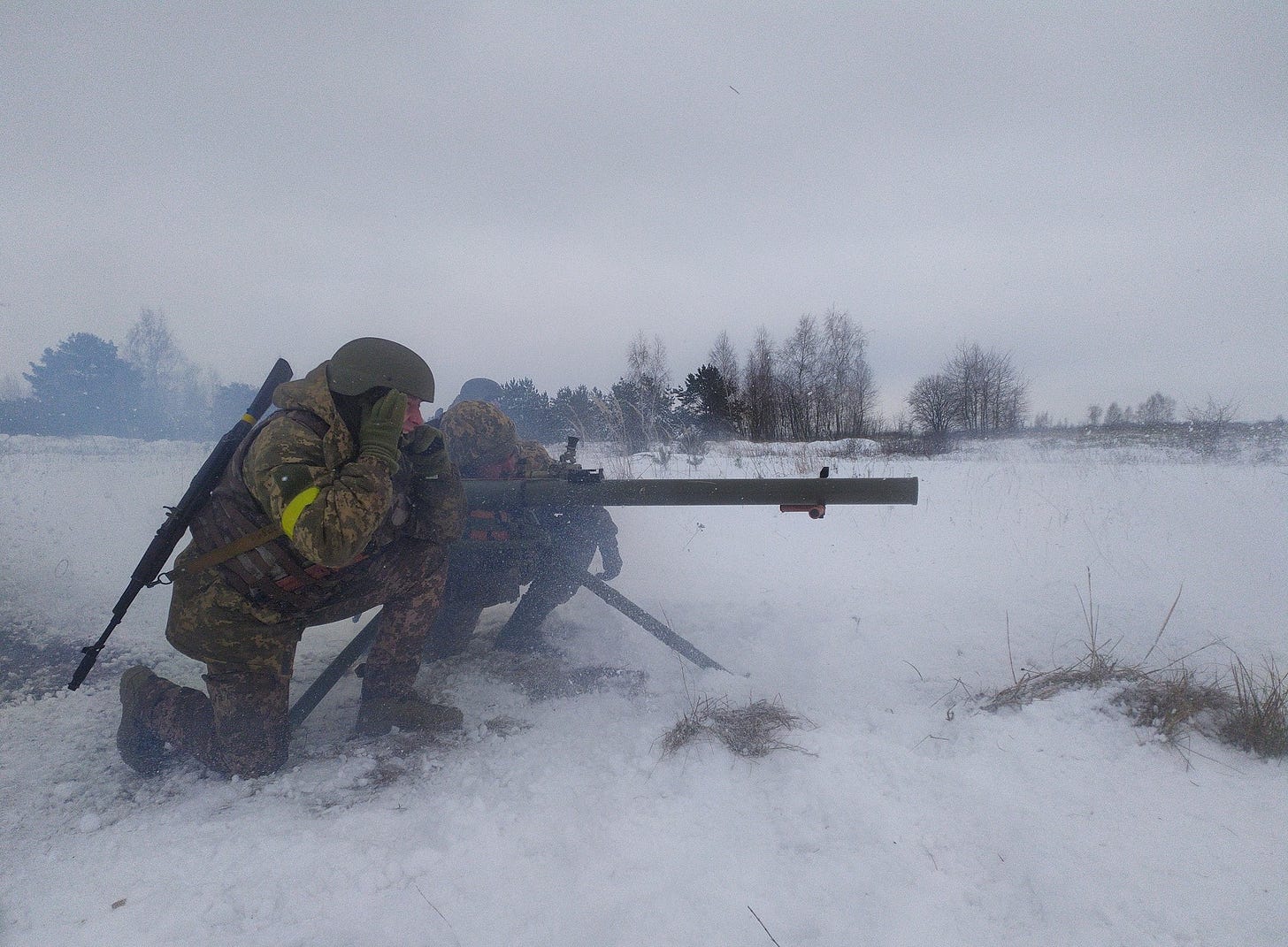
📖 Learn more:
✅ Ukraine and Russia claim to be prepared for extremes of winter warfare—here’s what they face, Marina Miron, The Conversation, 2023.
The Russo-Ukrainian War: The Return of History, Serhii Plokhy, 2023.
Invasion: The Inside Story of Russia’s Bloody War and Ukraine’s Fight for Survival, Luke Harding, 2022.
13) Opening up the Arctic (today)
No one’s fighting over the Arctic—yet—but the region is shaping up as a pivotal arena for potential future conflicts as melting sea ice makes it more navigable and strategically valuable. President Donald Trump’s aspiration to buy Greenland is one obvious sign of the Arctic’s growing geopolitical profile.
Long before human-caused climate change began transforming the region, the Arctic was a crucial chessboard in the Cold War, as both the United States and the Soviet Union deployed nuclear submarines to prowl beneath the ice and occasionally surface. Today, both nations remain rivals, the cat-and-mouse game continues, and the Arctic is still key terrain for early-warning systems because the shortest route for intercontinental ballistic missiles flying between the United States and Russia runs over the North Pole.
As the ice melts, new sea lanes are opening up, such as the Northwest Passage through Canada’s Arctic and the Northern Sea Route off Russia’s Siberian coast. These potential new shipping routes could become chokepoints and flashpoints, similar to today’s Strait of Hormuz off the Iranian coast, with big implications for global trade and military operations.
The Arctic region is also thought to hold vast reserves of fossil fuels and critical minerals that will become easier to exploit as the ice recedes. Consequently, many nations have been stepping up their capacity to explore for and defend Arctic resources, using assets such as icebreakers and military bases.
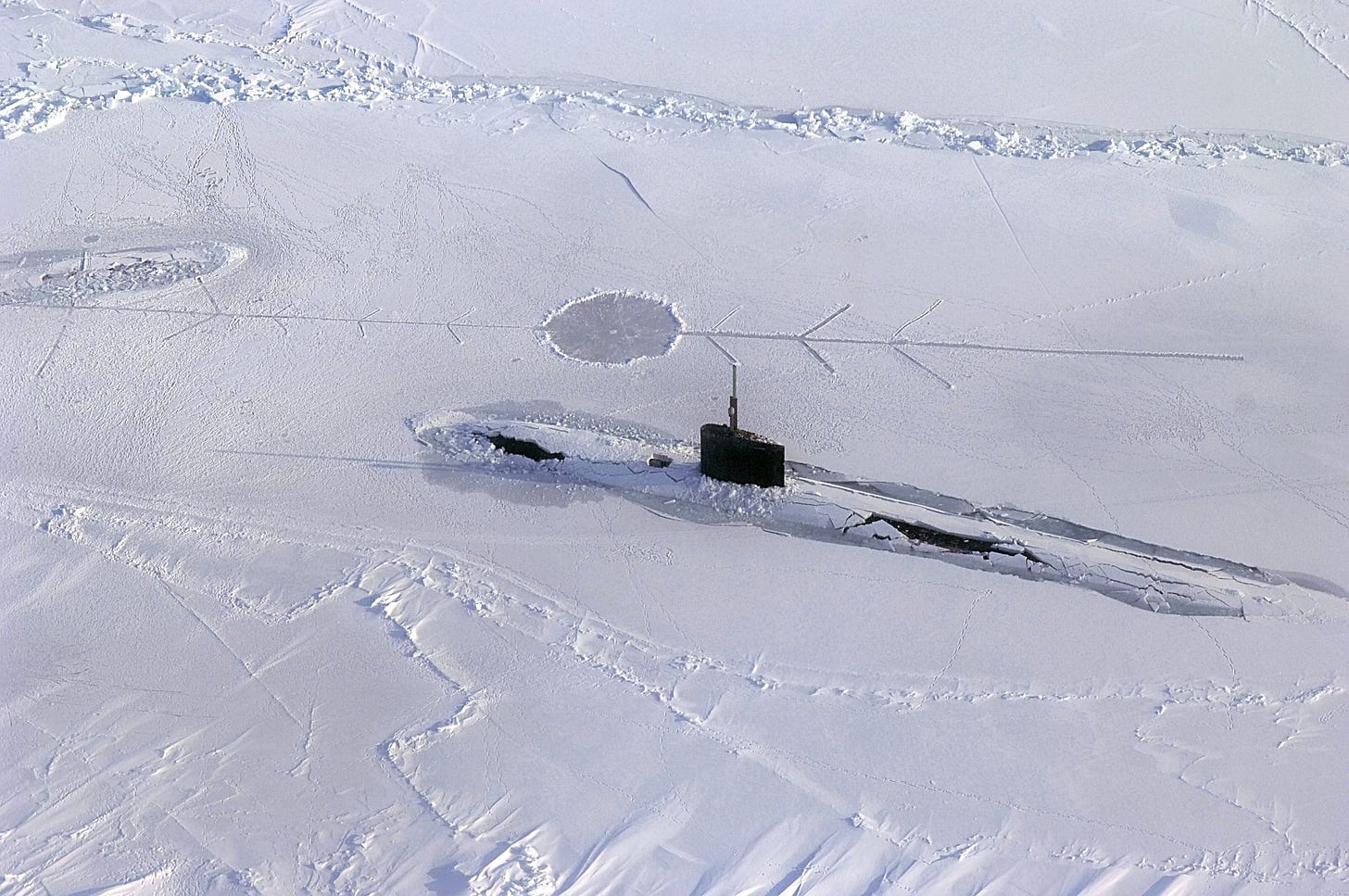
📖 Learn more:
✅ In the Arctic, American commandos game out a great-power war, Alex Horton and Salwan Georges, The Washington Post, 4/11/24.
✅ Hiding an Army at the Top of the World, Liam Denning and Louie Palu, Bloomberg Opinion, 6/4/23.
✅ See How Russia Is Winning the Race to Dominate the Arctic, Daniel Kiss, Thomas Grove, Vipal Monga, Austin Ramzy, and Roque Ruiz, The Wall Street Journal, 2/3/25.
2026 and beyond: Can we avoid a nuclear winter?
Talk about ending on a downer. Sorry, folks, but I wouldn’t be true to myself or foreign policy realism without venturing into this awful territory.
Yes, I’m scared and depressed about climate change. But part of me fears we’re going to leapfrog past the steady baking of the planet and plunge instead into a thermonuclear exchange that fades to black with a frigid nuclear winter threatening to extinguish life around the planet.

If you’re not familiar with the concept, nuclear winter is the term scientists coined decades ago to describe the cataclysmic aftermath of a nuclear war. The explosions and radiation would be calamitous enough, but the real killer would be the fires and their impact on the climate. Enough soot could be hurled into the atmosphere to blot out the sun for years and cause the Earth to descend into an apocalypse akin to a mini ice age. With enough cooling, billions could die from starvation. Ecosystems that evolved over millions of years could collapse in a geologic instant.
Could it really happen? Let’s hope not, but plenty of scientific studies have simulated the possibility. Some nuclear policy experts argue that our unstable world has never been closer to nuclear war than we are right now (see, for example, recent in-depth editorial projects by The New York Times and The Washington Post).
What are some doomsday scenarios for World War III and the onset of a nuclear winter? The scary thing is that it takes just one pathway, and there are plenty to choose from, especially since our government allows the president to unilaterally launch our nuclear weaponry within minutes in response to threats, both real and perceived (the new Netflix movie, A House of Dynamite, dramatizes this unthinkable decision). Other nuclear-armed nations are also on a hair-trigger.
Let me offer, in descending order of probability, my list of worries, each of which could set off a global chain reaction that is accelerated by AI-fueled disinformation:
Warning systems go haywire because of a false alarm, accident, or sabotage
China finally makes its move on Taiwan or in the South China Sea
Russia’s war in Ukraine spirals out of control and pulls in NATO
India and Pakistan escalate their long-simmering conflict over Kashmir
North Korea’s despot decides to unleash his hard-won nuclear arsenal
Israel and Iran resume hostilities and cross the nuclear threshold
An all-out nuclear exchange could mean Armageddon and the end of civilization as we know it, though most experts think the total extinction of the human species is unlikely. But even a smaller-scale, regional nuclear conflict could upend the Earth’s climate, causing worldwide death and destruction.
📖 Learn more:
✅ A Path Where No Man Thought: Nuclear Winter and the End of the Arms Race, Carl Sagan and Richard Turco, 1990.
✅ Nuclear War: A Scenario, Annie Jacobsen, 2024.
✅ 2034: A Novel of the Next World War, Elliot Ackerman and James Stavridis, 2021.
A Cold War kid in the 21st century
My head is full of geopolitical scenarios that could snowball into a nuclear winter. Writing this series forced me to revisit the Cold War obsessions that first gripped me as a teenager. One of the reasons I love snow and skiing so much is that they extract me from the mental winters I sometimes drift into.
I used to think about this stuff constantly. I entered Yale in 1988 as a hawkish fan of Ronald Reagan, fascinated with the intersection between game theory and nuclear strategy. One of my favorite books in high school wasn’t The Catcher in the Rye or To Kill a Mockingbird—it was Yale political scientist Paul Bracken’s The Command and Control of Nuclear Forces.
In college, I took sociologist Charles Perrow’s course on catastrophes and the inevitability of “normal accidents” in complex systems—a prospect that still haunts me. I planned to enroll in political scientist H. Bradford Westerfield’s famous course on intelligence and espionage, known to students as “Spies and Lies” (former Vice President Dick Cheney repeatedly said Westerfield’s tutelage in New Haven shaped his hard-line approach to foreign affairs).
But then the Cold War ended—or so we thought. Some very serious people were writing about the “end of history,” so I migrated to other topics, eventually settling on urban poverty. The liberal arts education at Yale shifted my politics, so upon graduating, I worked as a research assistant at the Urban Institute, a left-of-center think tank, before immersing myself in water and environmental issues in the American West.
All this is to say that I was weaned on a cynical, realpolitik view of foreign policy, which was colored by Eastern European, Jewish roots that made me treat holocausts and worst-case scenarios as tangible fears rather than academic abstractions.
The conservative economist and social theorist Thomas Sowell distinguished between constrained and unconstrained visions of human nature. The constrained view sees people as basically selfish, tribal, myopic, and stubbornly resistant to social engineering, however well-meaning. The unconstrained view holds that humans are more malleable and capable of evolving beyond their baser instincts to build a more harmonious world.
After decades spent in left-leaning circles—academia, journalism, environmental nonprofits—I have to admit that, when it comes to foreign affairs, I still find myself in the skeptical, constrained camp, retaining a jaundiced suspicion of our capacity to be angels.
I’m neither proud nor ashamed to be so jaded, so worried about a nuclear winter, or so sour about our prospects. It’s not a comfortable outlook. But it’s also something I can’t ignore.


